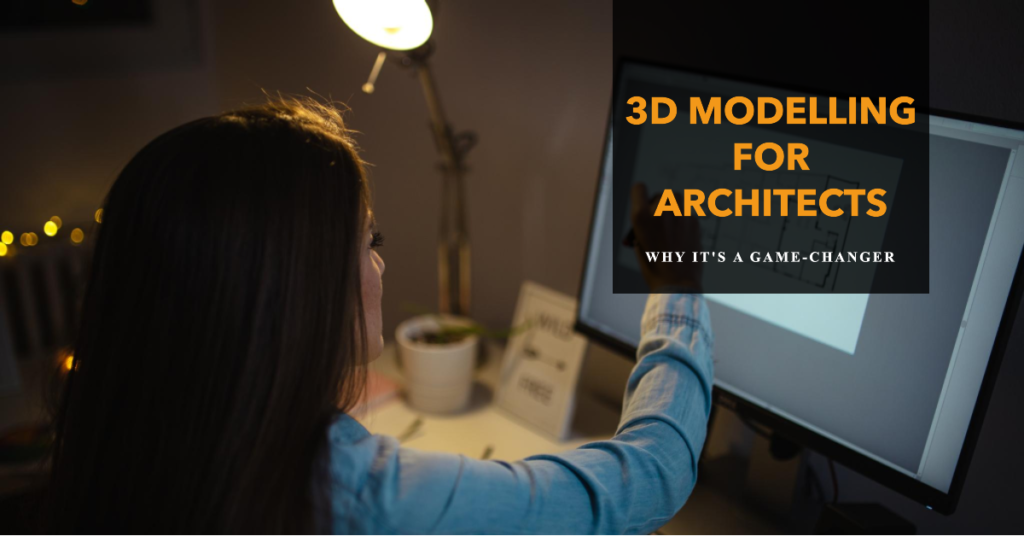
Table of Contents
Introduction: Embracing Innovation in Architectural Design
3D Modelling – In the fast-evolving realm of architecture, innovation is the cornerstone of progress. Architects constantly seek new tools and methodologies to streamline their workflows, enhance creativity, and ultimately, bring their visions to life with precision and efficiency. Among these tools, 3D modeling stands out as a game-changer, revolutionizing the way architects conceptualize, visualize, and communicate their designs. Let’s delve into the myriad ways in which 3D modeling empowers architects to elevate their craft and exceed expectations.
Visualizing Possibilities: From Concept to Creation (3D Modelling)
Traditionally, architects relied on two-dimensional drawings and blueprints to convey their design concepts. While these methods served their purpose, they often left room for interpretation and failed to capture the full scope and intricacies of a project. Enter 3D modeling, a dynamic tool that enables architects to transform abstract ideas into tangible, lifelike representations. By harnessing the power of three-dimensional space, architects can explore various design iterations, manipulate elements with ease, and visualize the final outcome with unprecedented clarity. Whether it’s shaping the contours of a skyscraper or refining the details of a residential interior, 3D modeling provides architects with a comprehensive canvas to unleash their creativity and refine their vision.
Precision and Accuracy: Building with Confidence
In the realm of architecture, precision is paramount. A single miscalculation or oversight can have far-reaching consequences, leading to costly delays and compromised structural integrity. Herein lies the inherent value of 3D modeling, which empowers architects to design with unparalleled accuracy and foresight. Through precise measurements, intricate detailing, and real-time simulations, architects can meticulously plan every aspect of a project, from the placement of beams to the flow of natural light. By detecting potential flaws and optimizing design solutions early in the process, architects can mitigate risks, streamline construction, and deliver results that exceed expectations.
Enhanced Collaboration: Bridging the Gap
Architecture is inherently collaborative, requiring seamless communication and coordination among architects, engineers, clients, and stakeholders. However, traditional modes of collaboration, such as static drawings and written documentation, often fall short in fostering effective teamwork and shared understanding. Herein lies the transformative power of 3D modeling, which serves as a universal language that transcends barriers and facilitates meaningful collaboration. By creating immersive visualizations and interactive models, architects can engage stakeholders in the design process, solicit feedback in real-time, and iterate on concepts with agility and precision. Whether it’s presenting concepts to clients, coordinating with contractors, or brainstorming ideas with fellow architects, 3D modeling fosters a culture of collaboration that drives innovation and excellence.
Efficiency and Time Savings: Streamlining Workflows
In the fast-paced world of architecture, time is of the essence. Tight deadlines, evolving client demands, and complex design challenges demand a streamlined approach to project management and execution. This is where 3D modeling shines, offering architects a suite of tools and functionalities to optimize their workflows and maximize efficiency. By centralizing design data, automating repetitive tasks, and facilitating seamless integration with other software platforms, 3D modeling empowers architects to work smarter, not harder. From conceptualization to construction documentation, architects can leverage the power of 3D modeling to expedite processes, minimize errors, and deliver projects on time and within budget.
Client Engagement: Bringing Designs to Life
At the heart of every architectural project lies the client’s vision and aspirations. Yet, translating these aspirations into tangible designs that resonate with clients can be a daunting task. This is where 3D modeling serves as a powerful ally, bridging the gap between imagination and reality. By creating immersive virtual environments and photorealistic renderings, architects can transport clients into the heart of their future spaces, allowing them to experience the design firsthand and make informed decisions. Whether it’s visualizing the layout of a luxury hotel or exploring the ambiance of a residential kitchen, 3D modeling enables architects to evoke emotions, spark dialogue, and forge meaningful connections with clients.
Adaptability and Iteration: Evolving Designs in Real-Time
In the dynamic world of architecture, change is inevitable. Design requirements evolve, client preferences shift, and unforeseen challenges emerge along the way. To thrive in this ever-changing landscape, architects must embrace adaptability and iteration as core principles of their craft. Herein lies the beauty of 3D modeling, which empowers architects to iterate on designs in real-time, explore alternative solutions, and adapt to evolving needs with agility and precision. Whether it’s tweaking the layout of a floor plan, experimenting with different materials, or refining the aesthetic details of a facade, architects can leverage the flexibility of 3D modeling to push the boundaries of creativity and innovation.
Sustainability and Environmental Impact: Designing with Purpose
In an era defined by climate change and environmental consciousness, architects bear a profound responsibility to design spaces that are not only aesthetically pleasing but also sustainable and eco-friendly. Herein lies the transformative potential of 3D modeling, which enables architects to integrate sustainability principles into every stage of the design process. By simulating energy performance, analyzing daylighting strategies, and optimizing building systems, architects can minimize environmental impact, reduce carbon footprint, and create spaces that promote health, wellness, and resilience. Whether it’s designing passive solar homes, implementing green roof systems, or incorporating recycled materials, 3D modeling empowers architects to design with purpose and make a positive impact on the planet.
Future Trends and Innovations: Pioneering the Next Frontier
As technology continues to evolve at a rapid pace, the future of architecture holds endless possibilities and opportunities for innovation. From artificial intelligence to virtual reality, emerging technologies are reshaping the way architects design, build, and experience spaces. Herein lies the promise of 3D modeling, which serves as a cornerstone of this digital revolution. By embracing cutting-edge tools and methodologies, architects can push the boundaries of creativity, unlock new design possibilities, and pioneer the next frontier of architectural innovation. Whether it’s harnessing the power of generative design algorithms or exploring the potential of augmented reality, 3D modeling empowers architects to embark on a journey of exploration and discovery, shaping the future of architecture for generations to come.


Conclusion: Empowering Architects to Shape the Future
In the ever-evolving landscape of architecture, innovation is not merely a choice but a necessity. Architects must embrace new tools and methodologies to stay ahead of the curve, meet evolving client demands, and push the boundaries of creativity and sustainability. In this regard, 3D modeling stands out as a transformative force that empowers architects to visualize possibilities, design with precision, collaborate effectively, and innovate with purpose. From enhancing client engagement to streamlining workflows, 3D modeling has become an indispensable tool in the architect’s arsenal, enabling them to shape the future of architecture with confidence, creativity, and compassion. As we embark on this journey of exploration and discovery, let us harness the power of 3D modeling to create spaces that inspire, delight, and endure for generations to come.


